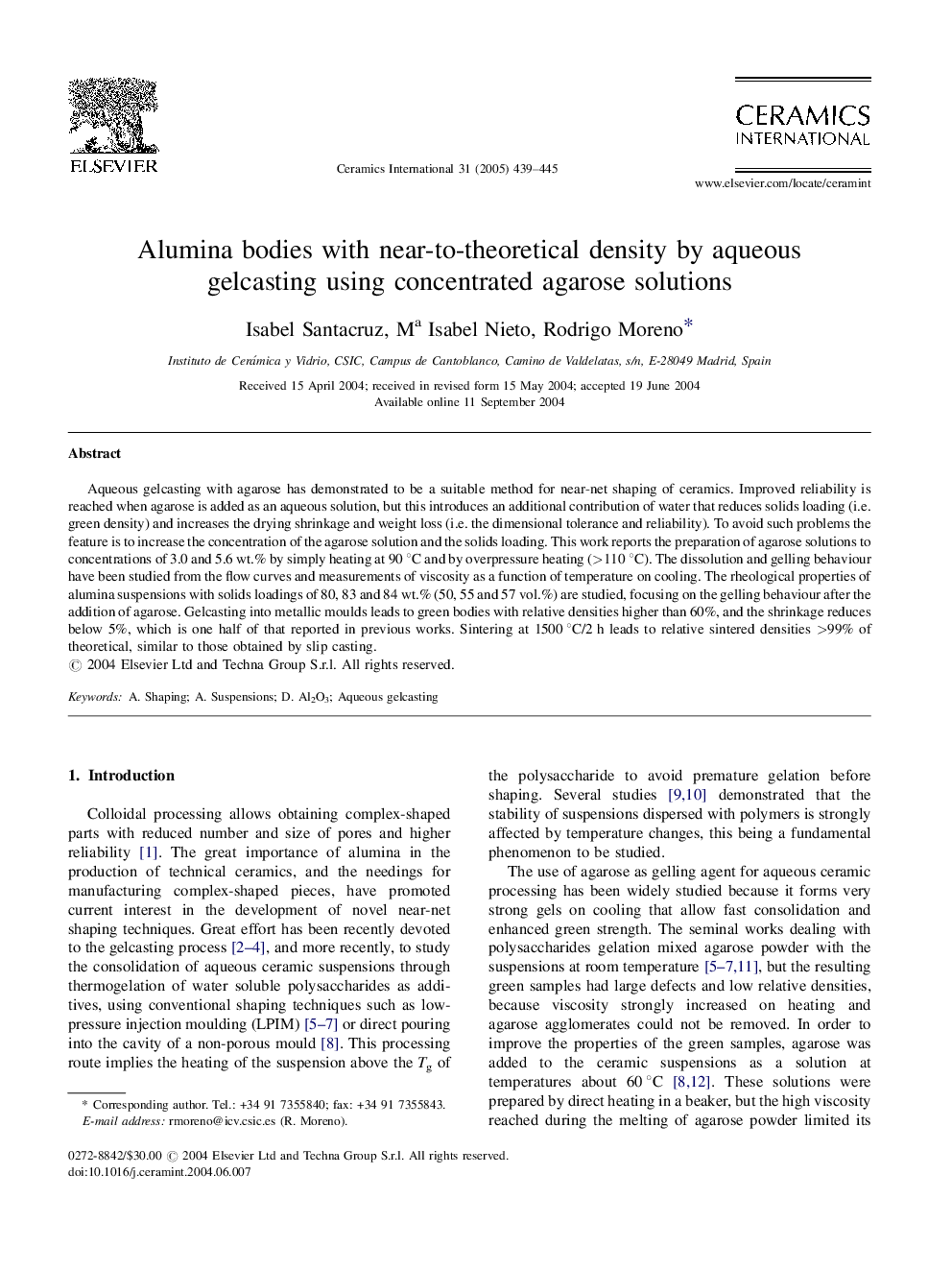| Article ID | Journal | Published Year | Pages | File Type |
|---|---|---|---|---|
| 10626545 | Ceramics International | 2005 | 7 Pages |
Abstract
Aqueous gelcasting with agarose has demonstrated to be a suitable method for near-net shaping of ceramics. Improved reliability is reached when agarose is added as an aqueous solution, but this introduces an additional contribution of water that reduces solids loading (i.e. green density) and increases the drying shrinkage and weight loss (i.e. the dimensional tolerance and reliability). To avoid such problems the feature is to increase the concentration of the agarose solution and the solids loading. This work reports the preparation of agarose solutions to concentrations of 3.0 and 5.6 wt.% by simply heating at 90 °C and by overpressure heating (>110 °C). The dissolution and gelling behaviour have been studied from the flow curves and measurements of viscosity as a function of temperature on cooling. The rheological properties of alumina suspensions with solids loadings of 80, 83 and 84 wt.% (50, 55 and 57 vol.%) are studied, focusing on the gelling behaviour after the addition of agarose. Gelcasting into metallic moulds leads to green bodies with relative densities higher than 60%, and the shrinkage reduces below 5%, which is one half of that reported in previous works. Sintering at 1500 °C/2 h leads to relative sintered densities >99% of theoretical, similar to those obtained by slip casting.
Related Topics
Physical Sciences and Engineering
Materials Science
Ceramics and Composites
Authors
Isabel Santacruz, Ma Isabel Nieto, Rodrigo Moreno,
